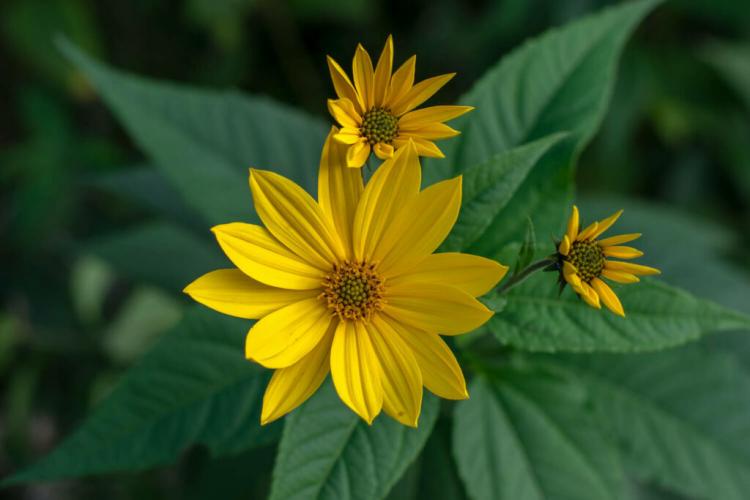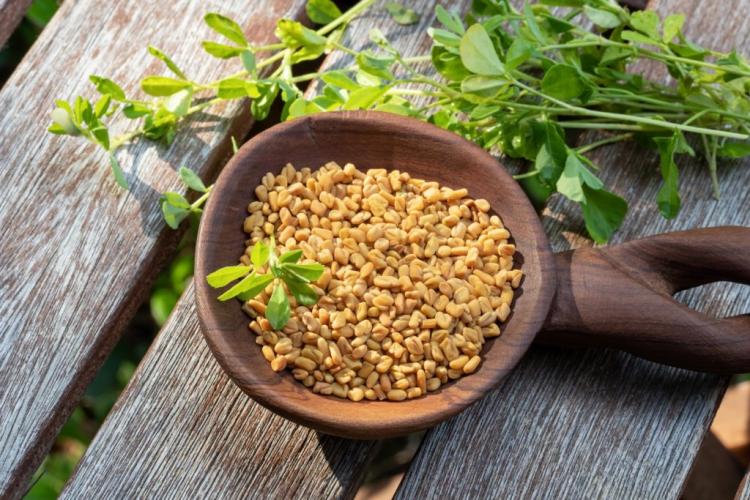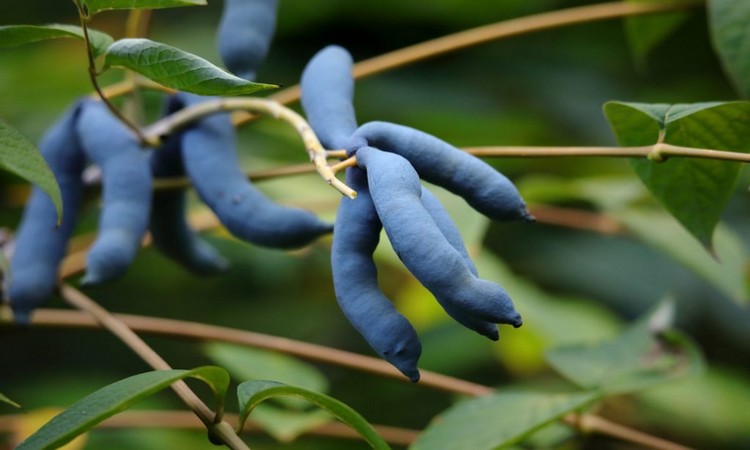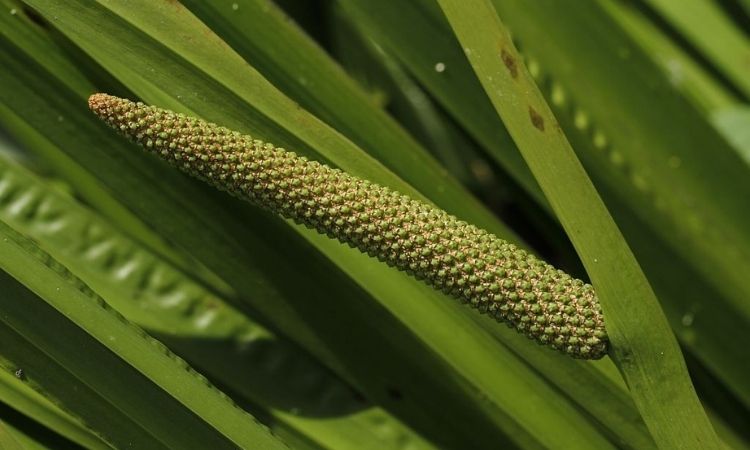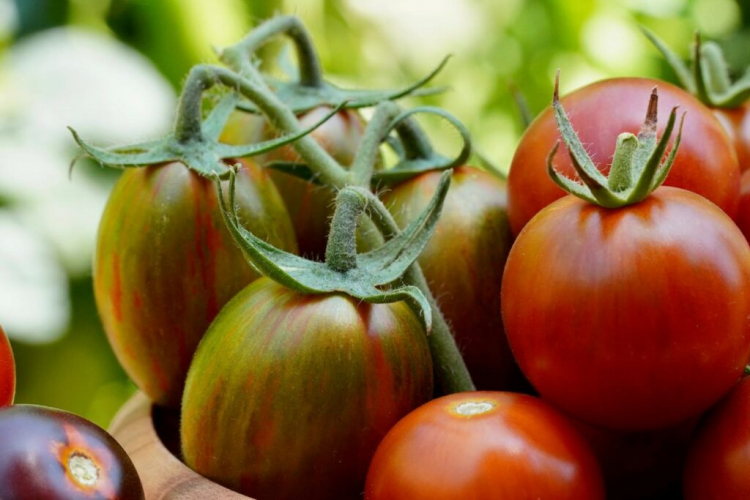Speedwell Flowers: Grow The Veronica Plant In The Garden
The speedwell is known above all for its healing properties. We will reveal which varieties of the flower there are and what you have to consider when planting in the garden.
Speedwell (Veronica) is easy to care for and has been used as a medicinal plant for centuries. The flowers of the plant also attract beneficial insects and other insects. So it’s high time to plant speedwell in your own garden, on your balcony or terrace. In this article, we will tell you how to do this. Here you will learn everything about the origin, different species, the correct procedure for planting, the correct care, and the use of speedwell.
Speedwell: origin and characteristics
Table of Contents
Speedwell is a plant genus from the plantain family (Plantaginaceae) and is common in Central Europe with a large number of species. Some of these are also called blue loosestrife in Germany. Where speedwell comes from, however, is unclear. However, it is assumed that the origin of the medicinal plant lies between Eastern Europe and Western Asia. Meanwhile, Veronica is spread almost all over the world, in all temperate and also in many subtropical regions you can find it.
Veronica is perennials or annual herbaceous plants, which are usually rather small. The leaves are opposite and sit close to the stem, sometimes with short stems. The spikelets are usually blue, some with transitions to white or purple. Especially characteristic are the two long stamens of the flowers.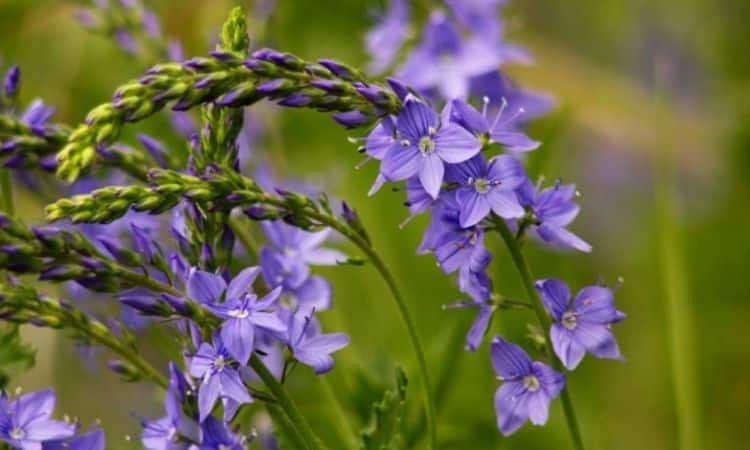
Speedwell species and varieties
In the USA alone you can find over 50 different wild-speedwell species in all kinds of places. Some prefer very humid locations directly at brooks, while others feel comfortable on dry grassland. Also, the growth forms are very different and reach from the rather inconspicuous meadow herb like the Gamander speedwell to the Veronica spicata with up to 40 centimeters high, long, blue flower ears.
Not every wild speedwell species is therefore suitable as a plant for the garden. However, due to the large selection of different varieties, the right Veronica can certainly be found for every taste and every garden.
Here are some of the Veronica species native to the USA and their location requirements:
- Speedwell, heather speedwell, or blue loosestrife (Veronica spicata): (Sand) dry and nutrient-poor grassland.
- Bach speedwell (Veronica beccabunga): Spring corridors, gaps in the reeds.
- Mountain speedwell (Veronica Montana): Humid to fresh mixed deciduous forests.
- Speedwell or wood speedwell (Veronica officinalis): Coniferous and deciduous forests, heaths, lime-avoiding.
- Field speedwell (Veronica arvensis): Fields, roadsides, park lawn.
- Rock speedwell (Veronica fruticans): Rocky slopes, alpine pastures.
- Speedwell (Veronica chamaedrys): Perennial meadows, bushes, and woodland.
- Daisy speedwell (Veronica bellidioides): Alpine, calcareous.
- Great speedwell (Veronica teucrium): Full sun, moderately nutritious, neutral to a calcareous soil.
- Long-leaved blue loosestrife (Veronica Maritima): brook margins, alternate perennial meadows.
- Horizontal speedwell (Veronica prostrata): Sunny, loamy, moderately fertile, moist but well-drained soil.
- Speedwell (Veronica urticifolia): Fresh mixed deciduous forests, Alps, and Alpine foreland.
- Persian speedwell (Veronica persica): Grows in all locations.
- Padded speedwell (Veronica peduncularis): Sunny; loamy, moderately fertile, moist but well-drained soil.
- Quendel speedwell (Veronica serpyllifolia): roadsides, fresh meadows, and pastures.
Speedwell Planting: Location And Procedure
In May, as soon as the ice saints are over, speedwell can be planted in the garden. Of course, the plant can also be cultivated well in a pot or balcony box. Which location is best suited for your speedwell depends very much on the species. It is best to pay attention to the description of the species and the respective location requirements when buying the plants.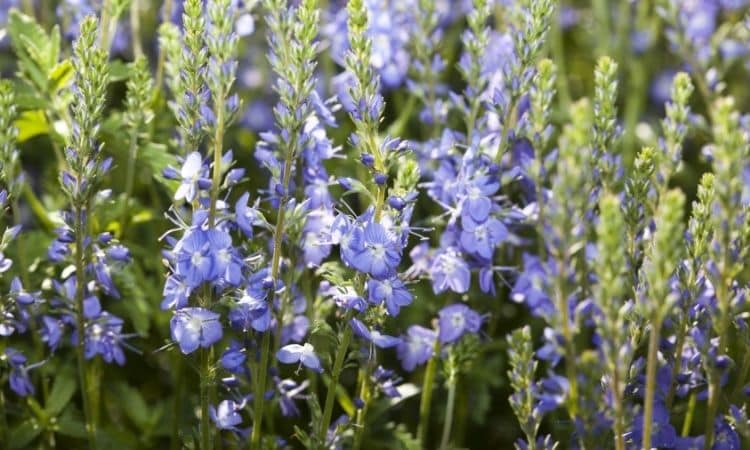
When and where to plant speedwell?
- Best planting time: mid-May.
- After the ice saints.
- Location adapted to the type.
- It is best to observe the labeling on the plant pot.
For planting, first, prepare the soil by loosening it well and removing weeds and stones. Now dig a planting hole. The next step is to address the special needs of your Veronica species: If the species prefers dry soil and is sensitive to waterlogging, then lay a layer of drainage, for example, gravel, before planting.
Lime-loving species will thank you if you raise the pH of the soil by lime before planting. Now you ensure the right nutrient supply. To do this, work a fertilizer with a long-term organic effect on the soil. Then carefully remove the speedwell plant from its pot and place it in the planting hole. It should be placed so deep in the soil that the lowest pair of leaves just barely sticks out of the ground. Then the planting hole is filled up with the excavated material and everything is well watered.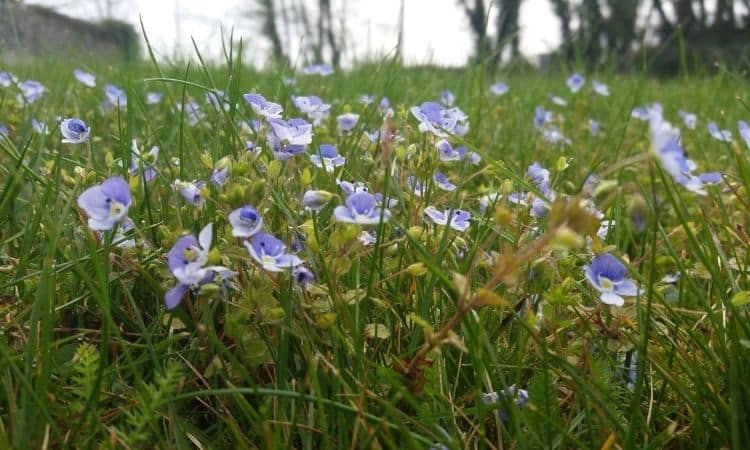
Step-by-step instructions: Planting speedwell
- Loosen up the soil.
- Lift out the planting hole.
- Create a drainage layer if necessary.
- Whitewash if necessary.
- Remove the speedwell plant from the pot.
- Place up to the lowest pair of leaves in the planting hole.
- Fill with soil.
- Casting.
Maintain speedwell: What you should consider
Once the speedwell has been planted, you will have little work with it. The medicinal plant is extremely undemanding and easy to care for. Only on particularly hot days and during long dry periods is it happy to be watered. Veronica also does not need excessive fertilizer. In the year of planting, you should apply basic fertilization, further fertilization this year is no longer necessary.
In the following years, you will be able to give your speedwell a treat with fertilizer in the spring before flowering. It is best to use an organic fertilizer such as compost or a fertilizer with long-term organic effects.
And to ensure that you can enjoy the delicate speedwell flowers for as long as possible, it is worthwhile to regularly cut off the faded shoots. It is also recommended to cut the entire plant by a third in early summer after the first flowering. This way you can look forward to a second flowering in late summer.
Speedwell care at a glance:
- Water only during longer dry periods
- Before flowering, fertilize with a fertilizer with a long-term organic effect
- Cut off withered shoots regularly
- In early summer cut back the whole plant by a third
Speedwell hibernate
Is speedwell hardy? This is the question many amateur gardeners ask themselves when summer is coming to an end. Since Veronica is a native plant species, all speedwell species are hardy. They can therefore withstand temperatures below freezing point. In the garden, the medicinal plant, therefore, needs no protection.
However, speedwell plants should be protected in a pot by moving them to a frost-free wintering area or by insulating the pot. It also helps potted plants if they are covered with brushwood in winter.
Speedwell propagation
The easiest way to propagate speedwell is by self-sowing. To do this, do not cut back the plant after flowering in early summer, but let it wither. In this way, the plant can propagate itself by seeds. Another variation is the selective sowing. This can be done from mid-February on the windowsill or directly in the garden bed from mid-May.
Another possibility to propagate speedwell simply by yourself is to divide the plants. In addition in the spring at least 15 centimeters long sections are cut from the mother plant. Each section should have at least one bud. The sections are planted and grow quickly into independent flowers.
Summary: Speedwell propagation by division
- By self-seeding: do not cut back in early summer.
- By sowing: an advance on the windowsill from February, in the open field from mid-May.
- By division: in spring, cut 15 cm long pieces with at least one bud.
Speedwell as a medicinal plant: effects and application
Speedwell has been used for centuries – both in the kitchen and as a medicinal herb. Although the leaves taste too bitter for many people, they are full of vitamins and iron and can therefore be used in salads or green smoothies. The flowers also make beautiful splashes of color in wild herb salads.
Even in ancient times, speedwell was considered an herb with a wide range of healing properties. In the Middle Ages, speedwell was used to treat diseases of the lungs and bronchi. It is also considered a remedy for poisoning. The herb was also used externally: against eczema, psoriasis, or itching.
Speedwell herb is still prepared today as tea. This is said to have an expectorant, diuretic, and calming effect. In addition tea from speedwell is said to help against increased Cholesterinwerte – scientific proofs do not give it for it, however (yet).

